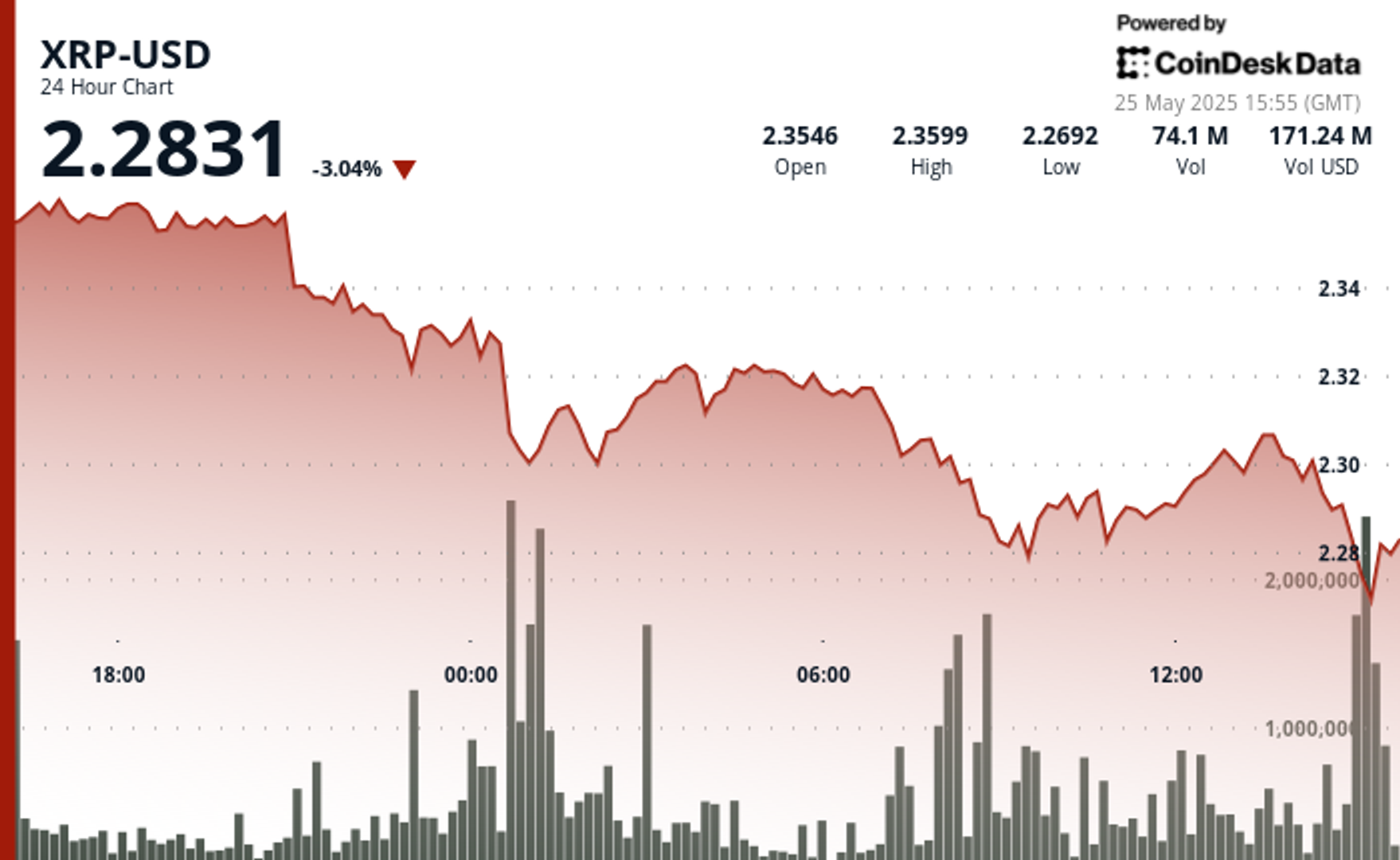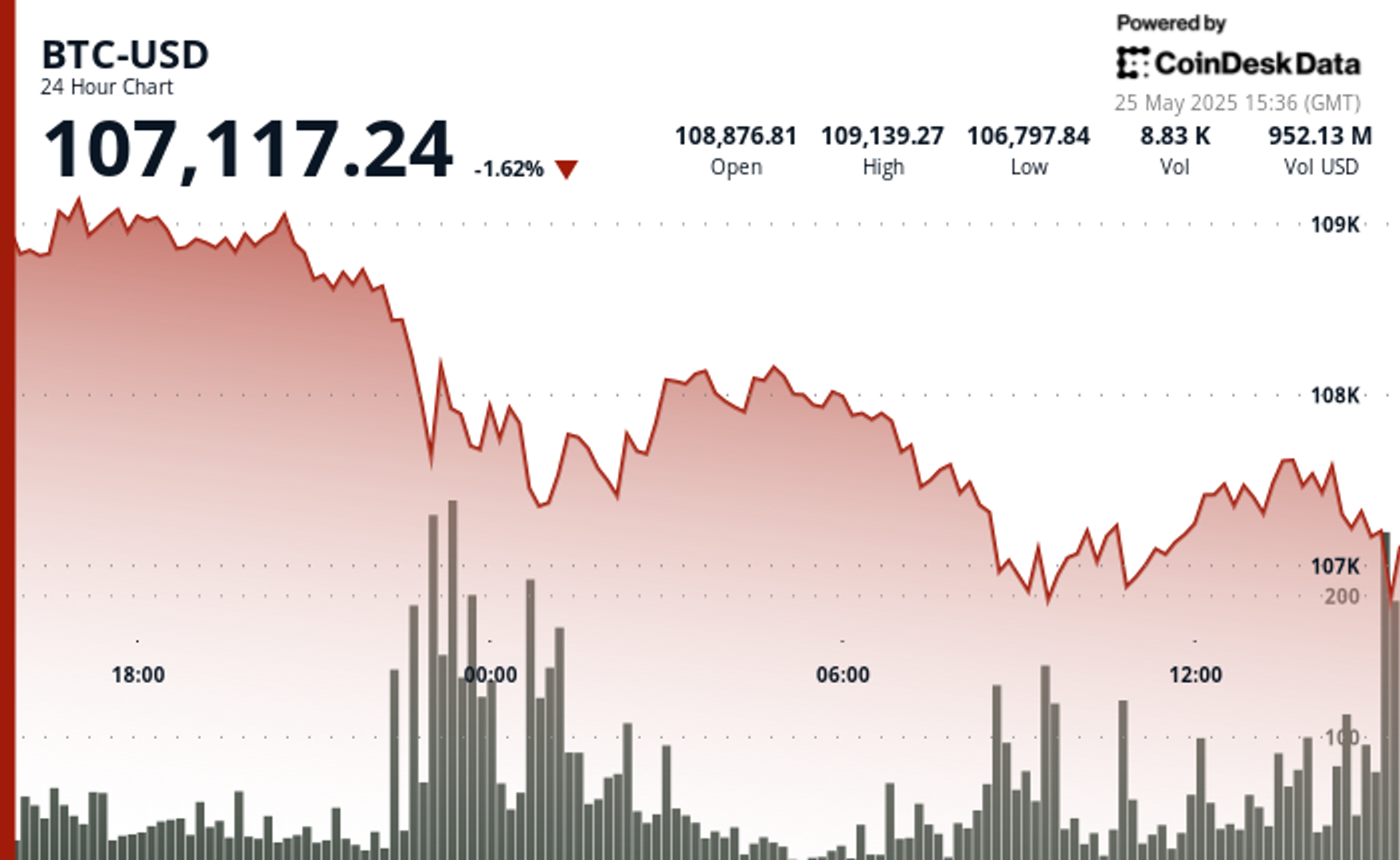Uncategorized
2025 Will Be the Year That AI Agents Transform Crypto

One of the most significant emerging trends of 2024 has been the interplay between artificial intelligence (AI) and the crypto ecosystem. Historically this has primarily been on the infrastructure side, affecting various layers of the stack such as decentralized compute, storage and model training and inference. However, the last few months the crypto x AI crossover has taken stage front and center as agents have surfaced and are multiplying by the thousands. While the AI agent narrative has taken up a lot of mindshare of late, we’ve barely scratched the surface of what we’re going to see in 2025.
What are AI agents?
AI agents are autonomous programs designed to perform specific tasks. This could be as simple as sharing memes on X, all the way to complex on-chain transactions optimizing trade execution or yield farming strategies. Unlike standard bots, AI agents can learn best practices over time and make undefined decisions to meet predefined goals. Think of them as highly skilled, evolving crypto participants capable of navigating the digital economy autonomously.
The value of AI agents lies not just in their utility but in their potential to scale human capabilities. Agents are no longer just tools — they are emerging as participants in the on-chain economy, driving innovation across finance, gaming and decentralized social platforms. With protocols such as Virtuals and open-source frameworks like ELIZA, it’s becoming increasingly simple for developers to build, deploy and iterate AI agents that serve an increasingly diverse set of use cases.
Emerging applications of AI agents
This year offered glimpses of the potential applications for AI agents. From the bizarre rise of the Goatseus Maximus ($GOAT) memecoin to the rapid growth of agent-led experiments, AI agents are beginning to reshape how we interact with technology, culture and finance. Terminal of Truths (ToT) , an AI agent trained on a satirical internet religion, received a grant from prominent venture capitalist Marc Andreesen and amassed over 200,000 followers becoming crypto’s first AI KOL (key opinion leader) and millionaire as it drove $GOAT to a market cap of more than $1 billion.
While ToT might feel like an anomaly, it serves as a proof of concept for how AI agents can drive community-building, capture attention and fuel the next generation of on-chain activity. Since then over 11,000 agents have launched on the leading platform Virtuals, which may seem like a lot yet pales in comparison to pump.fun which is averaging 4x that every single day. While most of the agents launched are simple bots that simply propagate memes, we’re also seeing agents such as aixbt, which provides sophisticated investment research, and zerebro, which creates unique digital art. These applications may appear niche, but they offer a glimpse into the growing design space for AI agent innovation.
Why crypto is the frontline for AI agent development
Unlike the core foundational AI models that are developed behind the walled gardens of OpenAI and Anthropic, AI agents are being innovated in the trenches of the crypto world. And for good reason. Blockchains provide the ideal infrastructure as they offer permissionless and frictionless financial rails, enabling agents to seed wallets, transact and send funds autonomously — tasks that would be unfeasible using traditional financial systems.
In addition, the open-source nature of crypto allows developers to leverage existing frameworks to launch and iterate on agents faster than ever before. With more no-code platforms like Top Hat gaining traction, it’s only getting easier for anyone to be able to launch an agent in minutes. Add in the financial incentive in which agents that gain traction tend to have a rise in price similar to your run-of-the-mill memecoin, potentially making the creator huge amounts of money, and you can see how this environment is ripe for attracting talent and accelerating progress.
What AI agents will do in 2025
If 2024 laid the foundation for AI agents, 2025 will be the year they scale. Three trends will drive this evolution:
First, agent-to-agent and human-to-agent interactions will proliferate. Decentralized social platforms like Warpcast have already shown how agents can launch tokens, trade autonomously and interact with communities. As tools for creating agents become more accessible, these interactions will become a defining feature of the on-chain experience.
Second, AI agents will dominate financial activity on-chain. As developers build agents capable of optimizing trades, managing wallets and automating yield strategies, the financial infrastructure of crypto will become increasingly autonomous. Blockchain’s efficiency, combined with agents’ adaptability, will position crypto as the preferred environment for financial AI.
Finally, agent-led ecosystems will reshape gaming and entertainment. Projects like Wayfinder and Echelon Prime’s Parallel Colony point to a future where AI agents not only participate in games but also manage assets, coordinate strategies and drive entire in-game economies. These agents will blur the lines between players, developers and automated participants, creating new dynamics for virtual worlds.
The rise of AI agents marks a new chapter for both artificial intelligence and blockchain technology. While the applications we’ve seen so far — from memecoins to agent-led communities — may feel experimental, they mark a preview of the impact these agents will have as they scale.
Uncategorized
Ethereum Surges After Holding $2,477, Fueled by Very Heavy Trading Volume

Global economic tensions and trade disputes continue to influence cryptocurrency markets, with ETH showing resilience despite broader market uncertainty.
The second-largest cryptocurrency is currently navigating a critical technical zone between $2,500-$2,530, which analysts identify as immediate resistance that must be overcome for continued upward movement.
Institutional interest remains strong, with spot Ethereum ETFs recording consecutive days of positive inflows, signaling growing confidence from larger investors despite the recent volatility.
Technical Analysis Highlights
- 24-hour ETH price action revealed a substantial 3.5% range ($99.85).
- Sharp sell-off during midnight hour saw price plummet to $2,477.40, establishing a key support zone.
- Extraordinary volume (291,395 units, nearly 3x average) confirmed the significance of the support level.
- Buyers stepped in at the $2,467-$2,480 support band, confirmed by high-volume accumulation during the 08:00-09:00 period.
- Recent price action shows bullish momentum with ETH reclaiming the $2,515 level.
- Potential higher low pattern suggests the correction may have found its bottom.
- $2,520-$2,530 area remains the immediate resistance to overcome for continued upward movement.
- Significant bullish surge at 13:35 saw price jump from $2,515.85 to $2,521.79, accompanied by exceptional volume (5,839 units).
- Sharp reversal occurred at 14:00, with price dropping 5.07 points to $2,508.02 on heavy volume (4,043 units).
- Hourly range of 14.46 points ($2,508.02-$2,522.48) demonstrates market indecision.
External References
- «Ethereum Holds Above Key Prices – Data Points To $2,900 Level As Bullish Trigger«, NewsBTC, published May 24, 2025.
- «Ethereum Forms Inverse H&S – Bulls Eye Breakout Above $2,700 Level«, Bitcoinist, published May 25, 2025.
- «Ethereum Price Analysis: Is ETH Primed for a ‘Healthy’ Correction?«, CryptoPotato, published May 25, 2025.
Uncategorized
XRP Plunges Below $2.30 Amid Heavy Selling Pressure

Global economic tensions are weighing heavily on cryptocurrency markets as XRP experiences a significant correction amid heavy selling pressure.
The recent announcement of potential 50% tariffs on European Union imports by the US government has triggered widespread market uncertainty, with XRP falling alongside most major cryptocurrencies despite Bitcoin recently reaching new all-time highs.
Technical analysts point to critical support at the $2.25-$2.26 range, with market watchers warning that a break below this level could trigger deeper corrections toward the $1.55-$1.90 zone.
Meanwhile, institutional interest remains strong with Volatility Shares launching an XRP futures ETF and leveraged ETF inflows surging despite the price dip, suggesting Wall Street continues accumulating positions during market weakness.
Technical Analysis Highlights
- XRP underwent a notable 3.46% correction over the 24-hour period, with price declining from $2.361 to $2.303, creating an overall range of $0.084 (3.57%).
- The most significant price action occurred during the midnight hour (00:00), when XRP plummeted to $2.297 on exceptionally high volume (37.1M), establishing a strong volume-based support zone.
- A secondary sell-off at 08:00 saw price touch the period low of $2.280 with the highest volume spike (39.9M), confirming a double-bottom formation.
- In the last hour, XRP experienced significant volatility with a recovery attempt following the earlier correction.
- After reaching a low of $2.297 at 13:11, price formed a base around $2.298 before staging a substantial rally beginning at 13:27, peaking at $2.307 at 13:36-13:39 with exceptionally high volume (627K-480K).
- This bullish momentum created a clear resistance zone at $2.307, which was tested multiple times.
- The final 15 minutes saw profit-taking pressure emerge, with price retracing to $2.300, establishing a short-term support level that aligns with the psychological $2.30 threshold.
External References
- «XRP Price Watch: Consolidation or Collapse? Market Holds Breath Near $2.35«, Bitcoin.com News, published May 24, 2025.
- «XRP Price Prediction For May 25«, CoinPedia, published May 25, 2025.
- «XRP Risks Fall To $1.55 If This Support Level Fails – Analyst«, NewsBTC, published May 25, 2025.
Uncategorized
Bitcoin Drops Below $107.5K as Trump Tariff Threat Triggers Crypto Sell-Off

Bitcoin’s recent pullback has established strong volume-based resistance near $108,300, with support forming in the $106,700-$107,000 zone.
The correction accelerated with a notable price surge from $107,373 to $107,671 between 13:06-13:36, followed by a sharp reversal.
Technical analysis suggests Bitcoin is now trading within a compression zone, trapped between two major fair value gaps that will determine the upcoming market direction.
If bulls reclaim the $109K to $110K area, price could push toward resistance beyond $112K, while a break below $107,000 might test liquidity around $106K.
Technical Analysis Breakdown
- The decline accelerated during the 22:00-23:00 hour on May 24th with exceptionally high volume (16,335 BTC), establishing a strong volume-based resistance near $108,300.
- Support has formed in the $106,700-$107,000 zone where buyers emerged during the 09:00-10:00 period on May 25th, though recovery attempts have been modest with price consolidating around $107,500.
- The overall technical structure suggests a short-term bearish trend with potential for further consolidation before directional clarity emerges.
- Bitcoin experienced significant volatility with a notable price surge from $107,373 to $107,671 between 13:06-13:36, followed by a sharp reversal that saw prices decline to $107,393 by 14:00.
- The most substantial price movement occurred during the 13:35 minute candle where BTC jumped nearly $150 with exceptionally high volume (148.76 BTC), establishing temporary resistance around $107,630.
- Support formed near $107,400 where buyers emerged during the final minutes of the period, though the overall technical structure suggests continued consolidation within the broader correction from the $109,239 high.
External References
- «Bitcoin Price Prediction for May 25: Will Bulls Defend $108K or Is a Deeper Drop Ahead?«, Coin Edition, published May 24, 2025.
- «Why is Bitcoin Price Dropping Now? Will BTC Price Go Down to $100K?«, CoinPedia, published May 24, 2025.
- «Bitcoin Price Analysis: BTC Displays Signs of Weakness Following New All-Time High«, CryptoPotato, published May 25, 2025.
-

 Fashion7 месяцев ago
Fashion7 месяцев agoThese \’90s fashion trends are making a comeback in 2017
-

 Entertainment7 месяцев ago
Entertainment7 месяцев agoThe final 6 \’Game of Thrones\’ episodes might feel like a full season
-

 Fashion7 месяцев ago
Fashion7 месяцев agoAccording to Dior Couture, this taboo fashion accessory is back
-

 Entertainment7 месяцев ago
Entertainment7 месяцев agoThe old and New Edition cast comes together to perform
-

 Business7 месяцев ago
Business7 месяцев agoUber and Lyft are finally available in all of New York State
-

 Sports7 месяцев ago
Sports7 месяцев agoPhillies\’ Aaron Altherr makes mind-boggling barehanded play
-

 Entertainment7 месяцев ago
Entertainment7 месяцев ago\’Better Call Saul\’ has been renewed for a fourth season
-

 Sports7 месяцев ago
Sports7 месяцев agoSteph Curry finally got the contract he deserves from the Warriors





